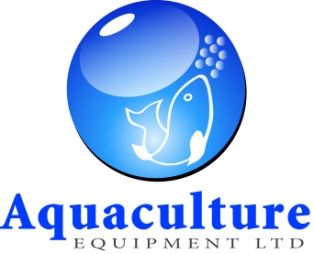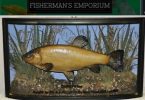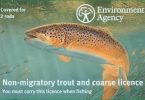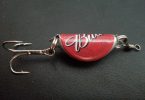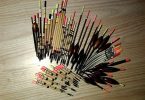Aerators are a common feature on many commercially stocked waters, but why are they needed and how do they work? We spoke to an expert in the field, Aquaculture Equipment Limited, and they supplied us with the following information;
Looking after the water quality
We are manufacturers and suppliers of fish farming, fish keeping and lake aeration equipment. Specialists in water treatment, oxygenation and aeration of fish farms and lakes. We are the UK distributor for the Italian aerators made by Acqua & Co. Our main focus is aeration equipment and oxygen monitoring.
We have developed a dissolved oxygen (DO) unit which monitors the DO constantly in the lake. This can be connected to the installed aeration equipment, and set to turn on the aerator(s) automatically when DO levels drop to a preset level (determined by the user). This takes the guess work out of when to use the aerators, whilst saving on running costs, too.
Alternately, the unit can be configured so the display unit sits inside the house or office, giving a constant, easy to read display of the DO readings. It can also be linked to a dialler system and send you a text message if there are any problems!
 Why aerators?
Why aerators?Aerators have been used for many years in the aquaculture industry to help sustain large densities of fish during the production cycle. Their use has steadily increased across fisheries in the UK over the last 15 years or so, mainly due to the increase in commercial match and pleasure fisheries. Stocking densities on some waters can be much higher than the levels found on some fish farms!
Together with high stocking densities and the large amount of bait used on these types of fisheries, it was no surprise to see poor water quality issues develop.
It can be annoying having to buy pellet from the fishery you have chosen to fish, however this is a practical step adopted by many fisheries now to control the quality and quantity of bait used.
More recently on the lower stocked waters such as the carp fisheries, algae has presented a problem. Algae is an important part of the food chain, and fundamental to any balanced fishery. The algae help increase the DO levels during the day through the process of photosynthesis, however at night, or in cloudy, overcast conditions, the opposite is true. The algae uses up DO through the process of respiration with the fish drawing on the DO availability night and day. This can result in problems even on the best managed waters.
Worst scenario is when the algae suddenly dies off (crashes), and starts consuming DO through the decomposition process. This can strip a water of available DO quite rapidly.
An often overlooked yet simple method of dealing with algae in densely populated lakes is to reduce the numbers of silver fish. Generally, these fish graze on the zooplankton (mainly daphnia), which in turn graze on the tiny phytoplankton (algae). This algae is tiny, but gives the water that green colour. By reducing the silver fish population, the zooplankton can re-establish, particularly if there is cover such as lily beds.
The solution
On a fishery, water quality and sensible stocking densities are key to the well being of the fish. Areas such as bait quality, managing the organic silt etc all combine to make a well run fishery. Often stress levels in fish rise or fall to fit with their surroundings and stressed fish can be susceptible to picking up secondary infections, or just go off the feed.
Using aerators on a regular basis will improve the water quality, and hopefully prevent any critical situation arising.
I am sure many of you will know from last summer, what effects a prolonged hot spell can have on the fish. Aerators should not be thought of as a piece of equipment needed all year round to make your fishery work, rather as a piece of equipment that compliments the measures already in place.
To have them on standby in case of unexpected conditions will offer some reassurance that you are taking the necessary precautions to protect your valuable stock.
Ice prevention
Another important benefit of aerators is their capability to keep large areas of water ice free over the winter. I have spoken to many fishery owners over the years; some taking the view that it is a natural event, so ‘let nature take its course’ and ‘it gives the fish a rest’. This may be ok if everything was in balance, however very few fisheries replicate a ‘natural’ body of water. On the surface, fisheries can look very natural – but below the surface there is a difference. Generally they will be quite well stocked, (in the wild nature will have already reduced a lake to its carrying capacity). Another important factor on many fisheries is the large quantities of organic silt. This is as a result of leaf litter, plant debris etc. This can give off hydrogen sulphide (which smells like rotten eggs). If there is prolonged ice cover, then these gases have nowhere to go. Dissolved oxygen is also slowly depleted as there is no contact or mixing with the air above the ice, resulting in stressed and dying fish.
Shallow silty lakes tend to be worst affected, as there is a lot less volume of water. A covering of snow on top of the ice also stops the sunlight getting to the submerged vegetation, stopping any photosynthesis and leading to even less dissolved oxygen available for the fish. Using an aerator can prevent these problems!
Remember, aerators were first used on fish farms to maintain high stock levels. Well aerated water will not only achieve this, it will also induce the fish to feed, and more importantly convert this feed, resulting in good growth.
If the aerators were linked to our oxygen monitoring units, the guess work is taken out of when to actually have the machines running.
We can deliver to anywhere in the UK and France. All the machines can either be mains powered, or supplied with a suitable sized generator for the unit.
We make a wide range of other products, including fish feeders, fish transport tanks and fish rearing tanks. Contact us on 0161 6835869 or 07715 007964 if you require any further information. Videos of the aerators working can be found on our website: www.AquacultureEquipment.co.uk














